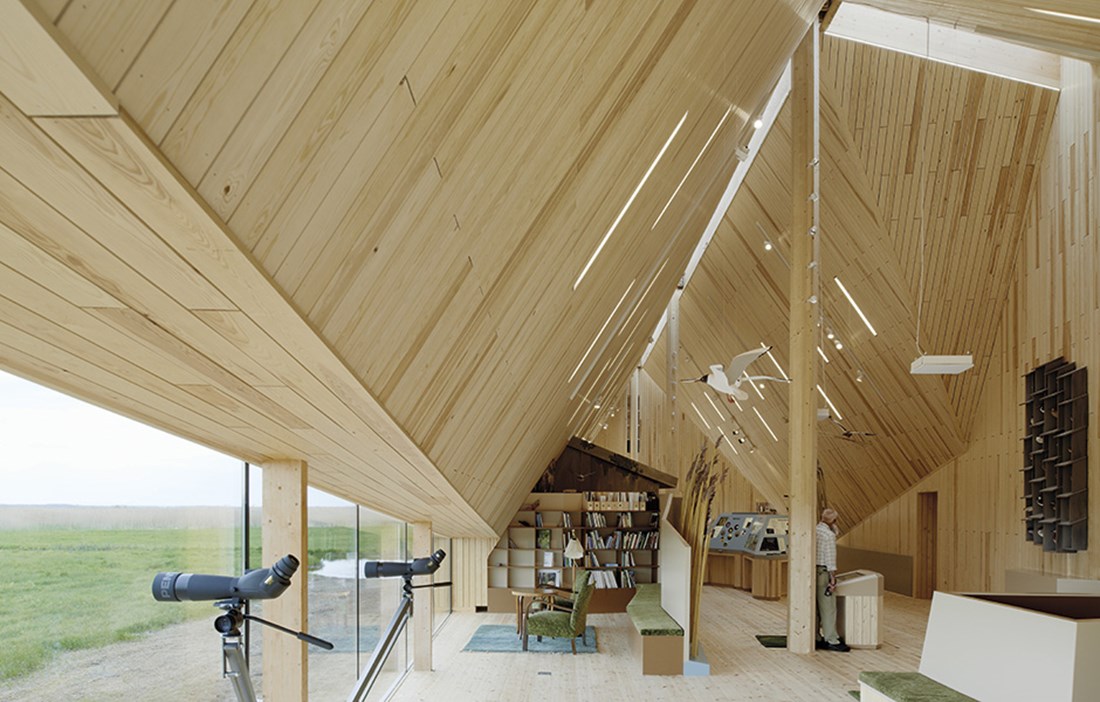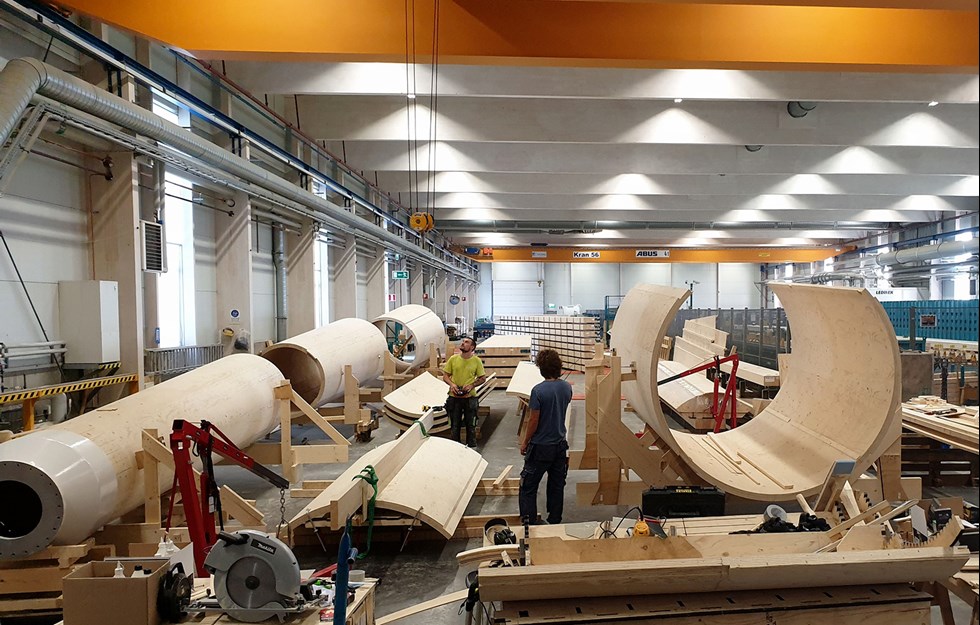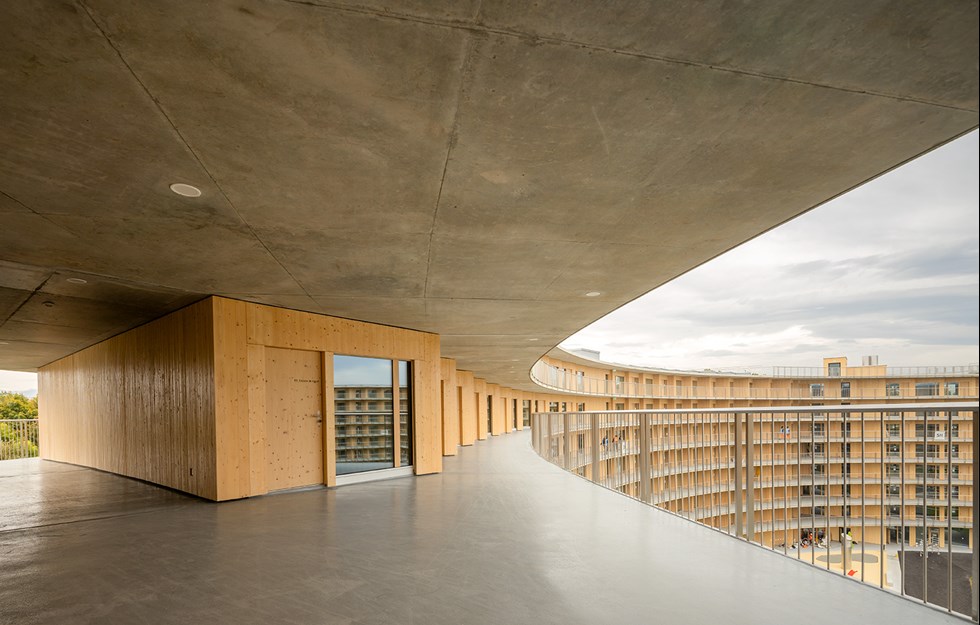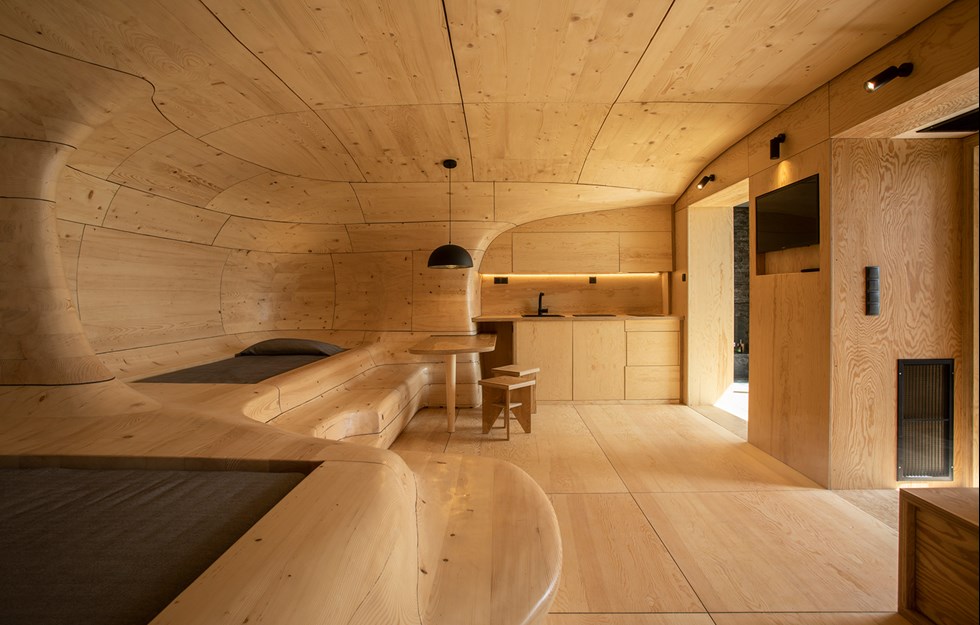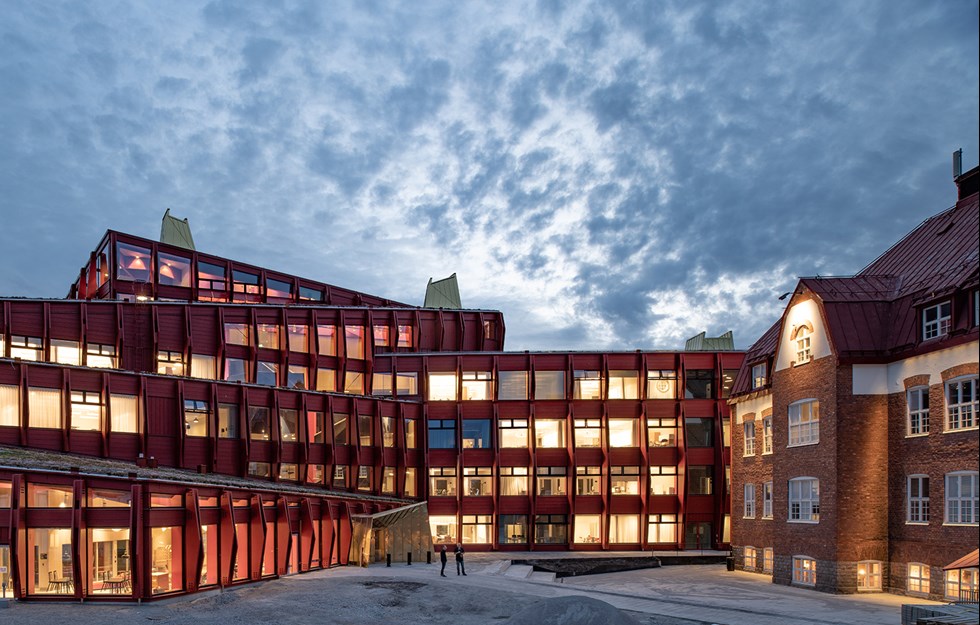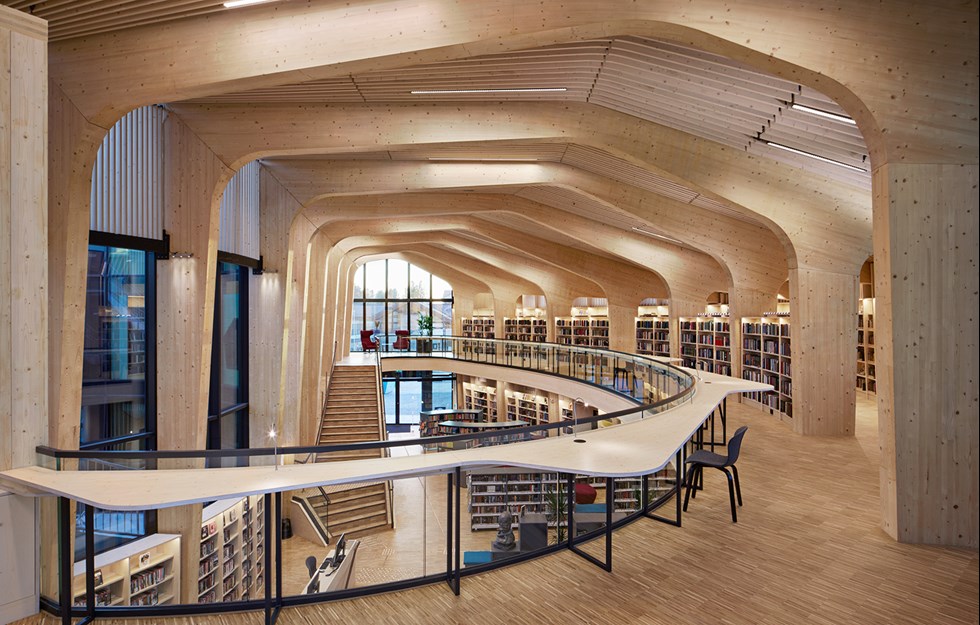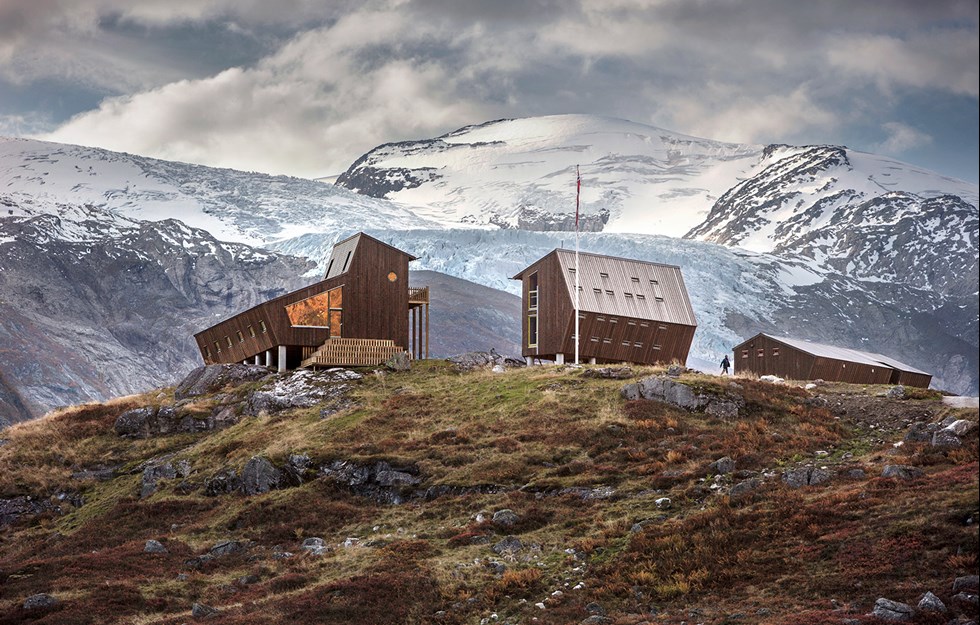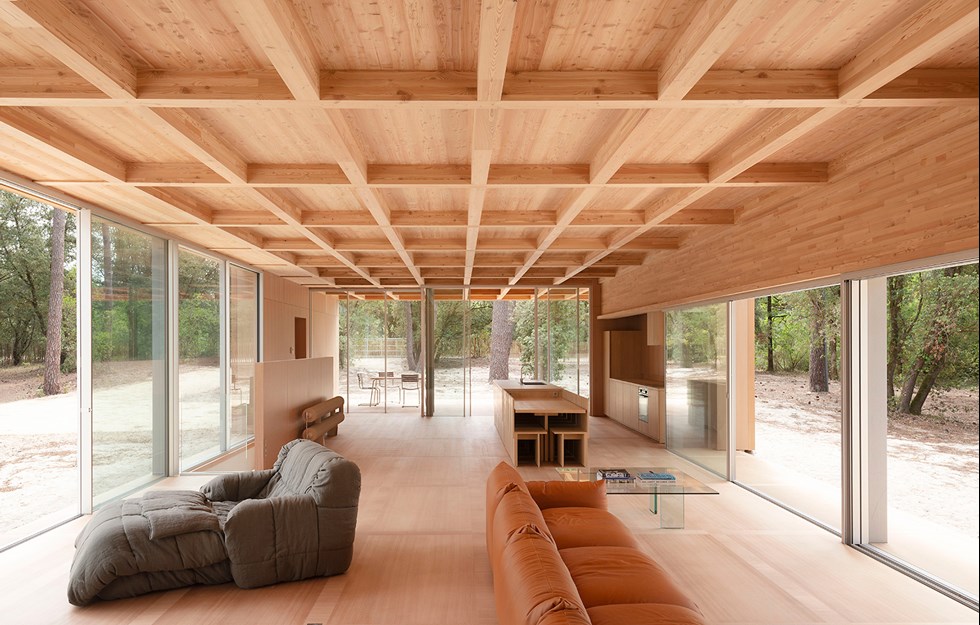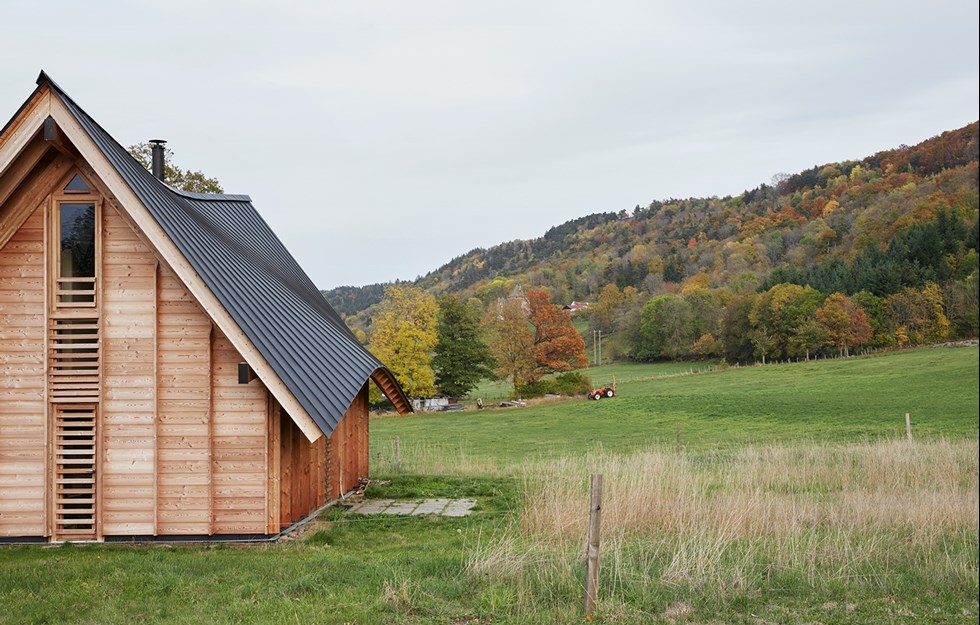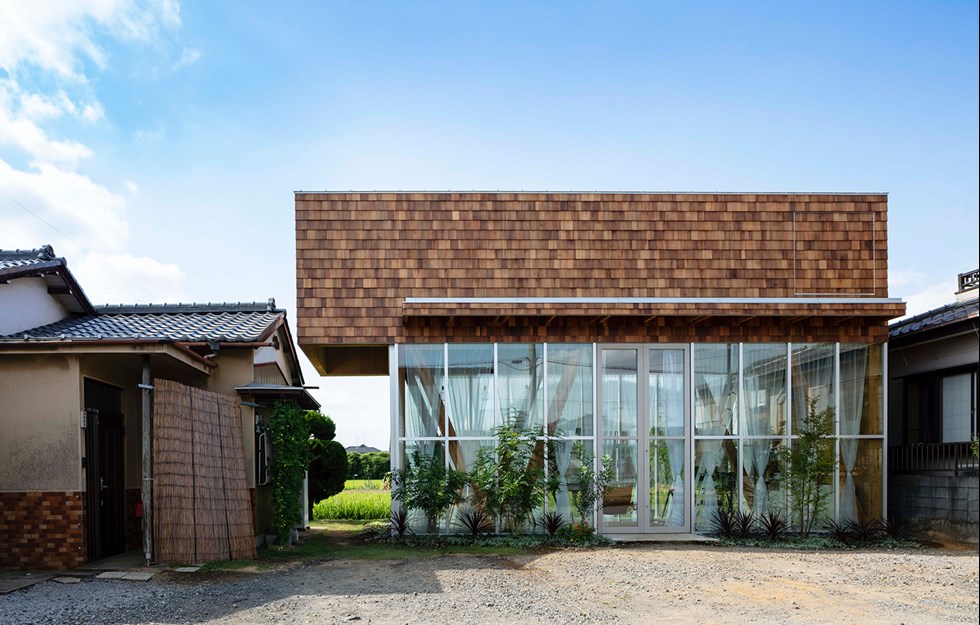“HAVE YOU SEEN a red-crested pochard yet?”
I look up from the telescope and see that I’ve been joined in the tower by two birdwatchers. They quickly unpack their camera and binoculars, explaining that on the website ‘Bird of the Day’, they read that a red-crested pochard was spotted here yesterday, with three ducklings. This is the first time the bird has been known to breed anywhere in Sweden. The birdwatchers set up the binoculars and stare out over the orchid meadows, the reedbeds and the little islets in Lake Tåkern on the lookout for the rare bird.
The bird tower is part of Naturum Tåkern, Sweden’s 29th new nature-focused visitor centre.
Designed by Wingårdh Arkitektkontor, this visitor centre opened in late May 2012. However, although the bird tower was completed three years ago, the other two buildings only appeared recently, having found themselves embroiled in the debate on how Swedish environmental protection funding should be allocated. After lots of hesitation, a rather slimmed down budget and the Tåkern Foundation coughing up the last few millions, Naturum Tåkern was finally completed.
Today, the little group of buildings forms an attractive silhouette, as if they’ve pulled themselves up onto the shore of the lake. The first thing to strike a visitor is the fact that the buildings’ roofs and walls are clad in reeds – around 36 million in fact, taken from last year’s harvest on the neighbouring farm, Väversunda Gård.
“When we came to Tåkern to look at the area, we immediately knew we wanted to somehow use the huge resource of reeds around the lake. After reading up on building in thatch, we realised what a sustainable material it is. If you lay the reeds at an angle of 45° or less, the water will run off the thatched roof, which will have a lifetime of between 50 and 70 years. That makes it one of the most sustainable materials around,” says Jonas Edblad, architect at Wingårdhs.
AND SO EVERYTHING fell into place. Taking this approach led to the look of the main building, with the properties of the reeds contributing to its design. However, the angles were also something of a headache for the architects.
“We worked with a model to design the main building. Looking at it now, you might think it looks simple, but it was extremely tricky to get the angles to work. The building is not symmetrical, which means there are different angles between the different corners. Working it all out was quite a challenge,” Jonas Edblad.
There were also other factors that influenced the shape of the main building. The U-shape is the result of the chilly wind from the lake, which made it a good idea to build a sheltered courtyard. There was also not much need for openings in the building, because it would be used as an exhibition space. There were, however, three places that needed light and views out. Firstly, in the entrance to give contact with the courtyard and make the route into the exhibition short and pleasant. Secondly, a window with a view that can be seen as soon as you come in, attracting visitors into the exhibition. Thirdly, a large panoramic window in the far corner, offering stunning views of Lake Tåkern. The rest of the lighting comes from long lamps in the ceiling and the glazed roof ridges. The ridges are actually the most sensitive part of a thatched roof and the glass was a technically sound way of capping the thatch, while also giving the exhibition space an attractive light from above.
The reeds are not the only building material from the local area. The limestone in the entrance is sourced from Borghamn at the foot of Omberg, on the other side of the lake, and the wood in all the buildings is pine and spruce from Swedish forests. The main building stands on a concrete slab due to the damp ground, but the rest of the building is constructed entirely around a glulam frame clad in pine panelling on the inside. Everything, from the church-like vaulted ceiling to the walls and floor, is relatively untreated pine.
“We wanted to create a modern wooden building using old techniques. Everything that would usually be metal in a building, we’ve done in wood. The window flashing, for example, is wood. Internally, we wanted the electrical fittings and radiators to be as invisible as possible and we used wood to conceal them. The bird tower is made entirely from wood, except for the two platforms, which are concrete to add weight to the tower and stability for the birdwatchers’ binoculars,” states Jonas Edblad.
A visitor centre had long been planned for the shore of Lake Tåkern. Ever since the 1840s, when the level of the lake was lowered a couple of metres to free up new farmland, Tåkern has been a paradise for birds who love clumps of reeds and the easily accessible lake bed vegetation. In the early 20th century, Baron Axel Hermelin planned to drain the lake completely dry and ‘intended not to die before he saw the crops waving in the breeze on the bottom of Lake Tåkern’. However protests, not least from Selma Lagerlöf in her book The Wonderful Adventures of Nils, plus a lack of funding, meant the plans were never realised – something all the birdwatchers and outdoor enthusiasts who make the pilgrimage here are grateful for.
THE CURRENT TARGET is to attract 100,000 visitors per year to Tåkern. Since the centre opened, visitor numbers have seen a massive boost. In fact 20,000 people came in the first month alone.
“We believe the visitor centre is not just increasing the number of people coming to Tåkern but to the whole area. The building itself is also attracting more visitors. When we chose Wingårdhs’ entry as the winner, we thought the building was a unique shape that at the same time merged beautifully with its environment. The precedent for visitor centres comes from the USA, but while there all the buildings look the same, in Sweden we wanted them to reflect their surroundings and be a model of good architecture. We think Wingårdhs has delivered extremely well on both scores,” says Anders Bergquist, case officer at the Swedish Environmental Protection Agency.
Both Jonas Edblad and Wingårdhs are happy with the result.
“Some people have said they think the buildings look like a nest, which feels quite appropriate. When we heard that, we knew we’d done a good job.”
I leave Naturum Tåkern after a couple of hours in the tranquil lakeside setting. To their delight, the chirpy birdwatchers got to see their red-crested pochard. Then they moved on to the next bird, or the next ‘tick’ as they say in ornithologists’ speak.
Text Erik Bredhe


